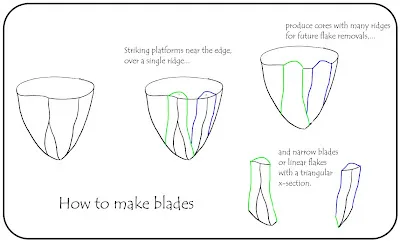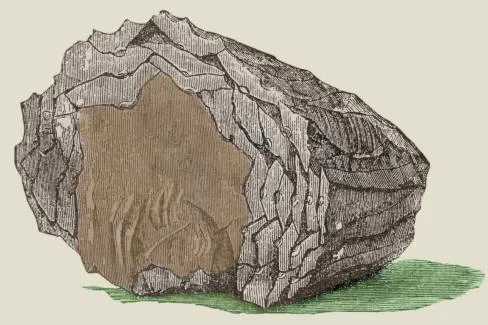I took a trip to the desert a couple of months back and during a lunch break discovered a Late Stone Age tool manufacture spot.
The spot had an awesome view.
From this vantage point you could manufacture your stone implements and at the same time keep an eye on game movements along the river bank below.
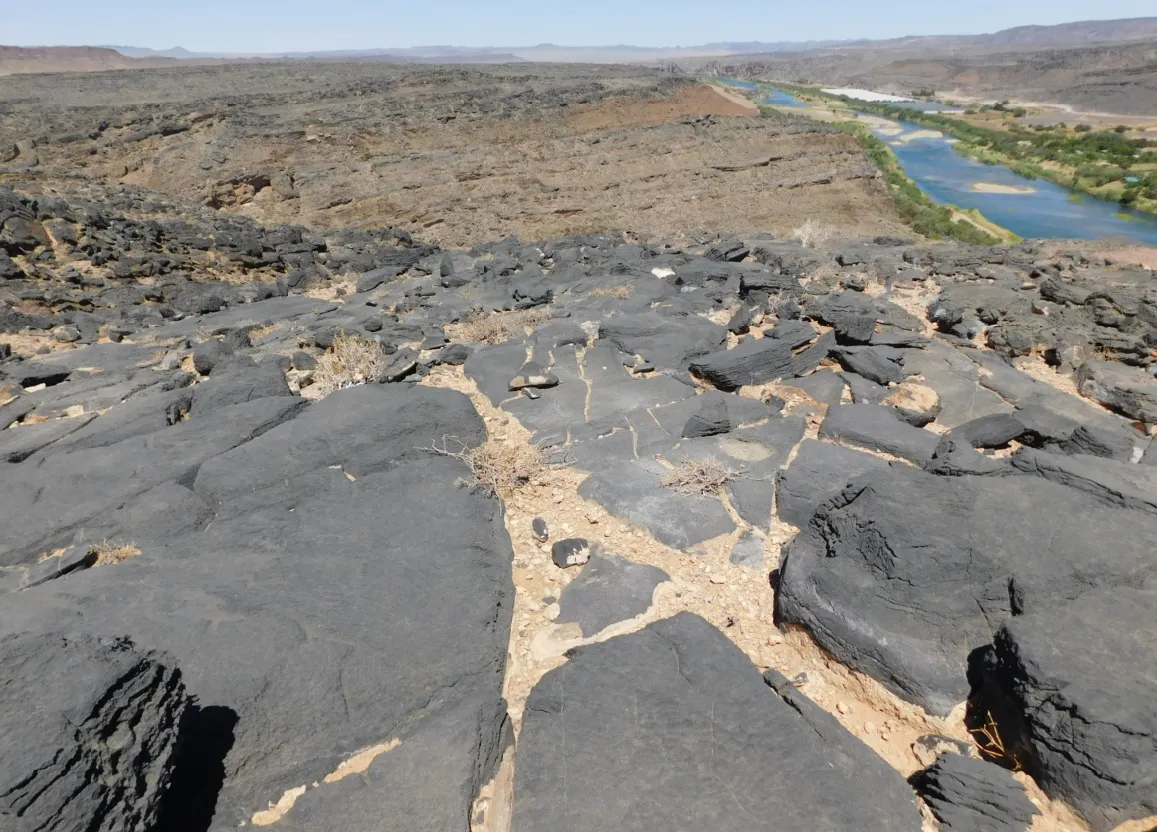
The pile of chips would have been made by Southern Africa's Hunter gatherers the Khoisan.
When you find a manufacture spot there will be a lot of irregular chips.
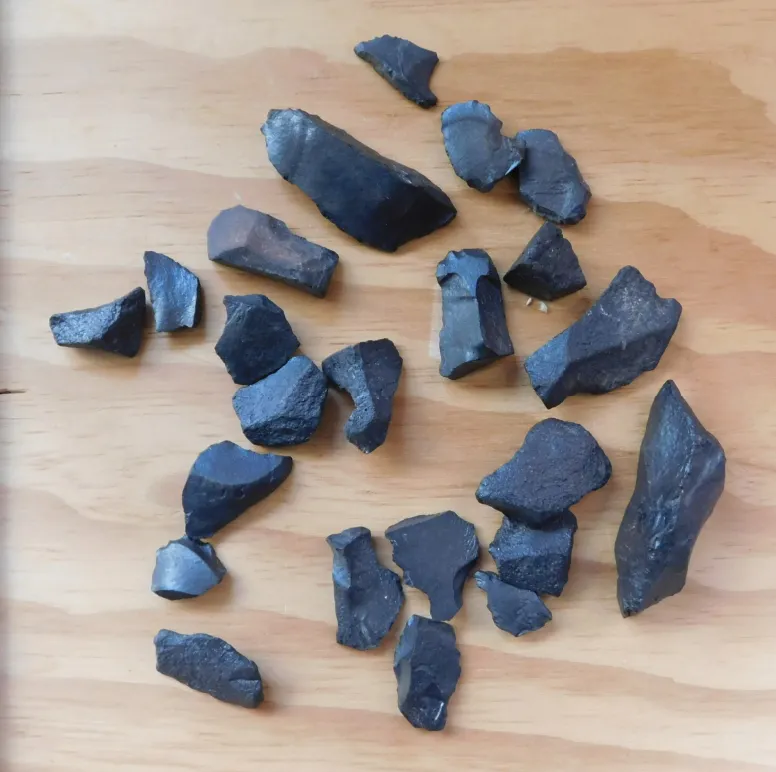
These are the initial flakes that are made to shape the stone into a usable core.
Once the core is shaped then blades can be struck from it. One typically only finds the broken ones since these are the first ones made in finalizing the shaping of the core. The good ones are flaked off as and when needed likely somewhere else.

Blades are characterized by having a triangular or trapezoidal cross-section and a flat underside, as shown here, in the ones pictured above, that have been flipped over.
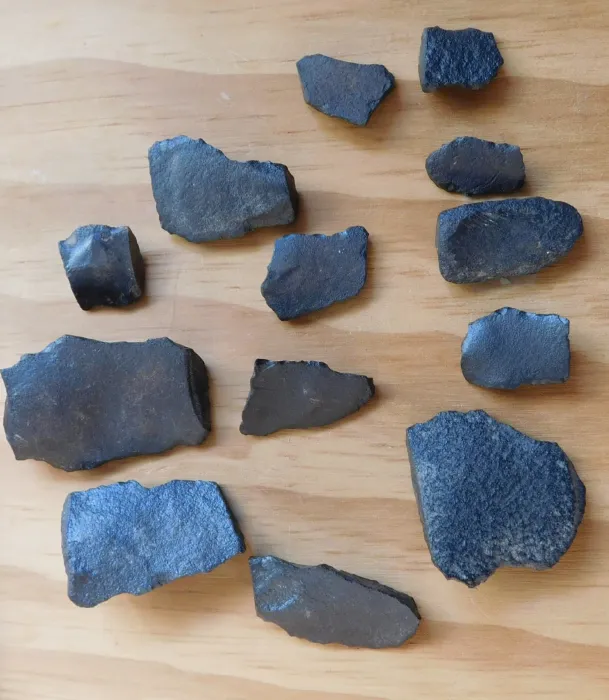
Blades are made from a prepared core as shown below.
By making blades you can get far more sharp, usable, cutting surface that from just making a single handaxe. Blades and blade cores are a very distinctive characteristic of the later periods of the stone age; and demonstrate a far more efficient use of good quality stone material.
Below is a picture of a reconstructed core, reconstructed by someone with far more patient than me. It shows just how many blades can be struck from a single rock and how the undersides or the previous blade forms the top side of the next blades.
Once the core has been shaped, it can be carried around and blades struck off it at will, as and when they are required.
That way you simply carry a shaped and lighter rock around with you instead of a pocketful of brittle razor blades just waiting to slice your fingers and pocket.
This way they are also as sharp as a scalpel when you need them and they would only take a couple of seconds to produce when required to butcher a kill.

